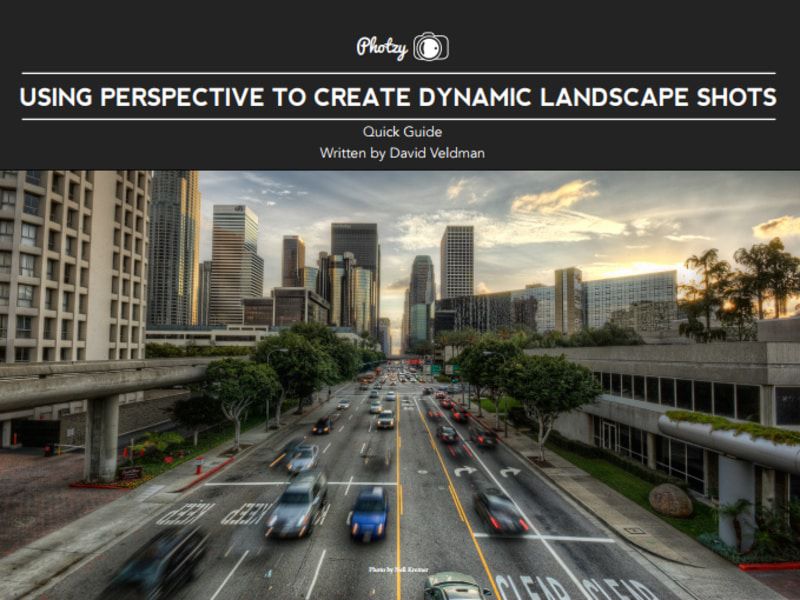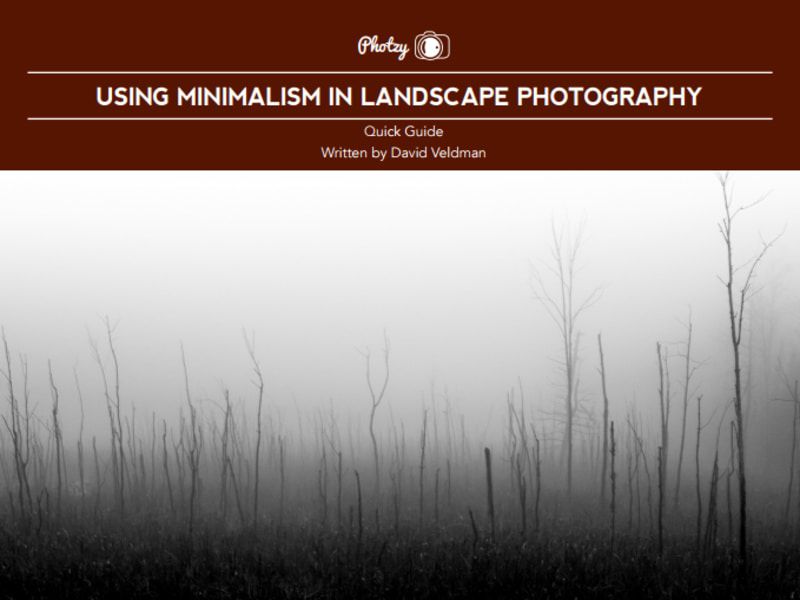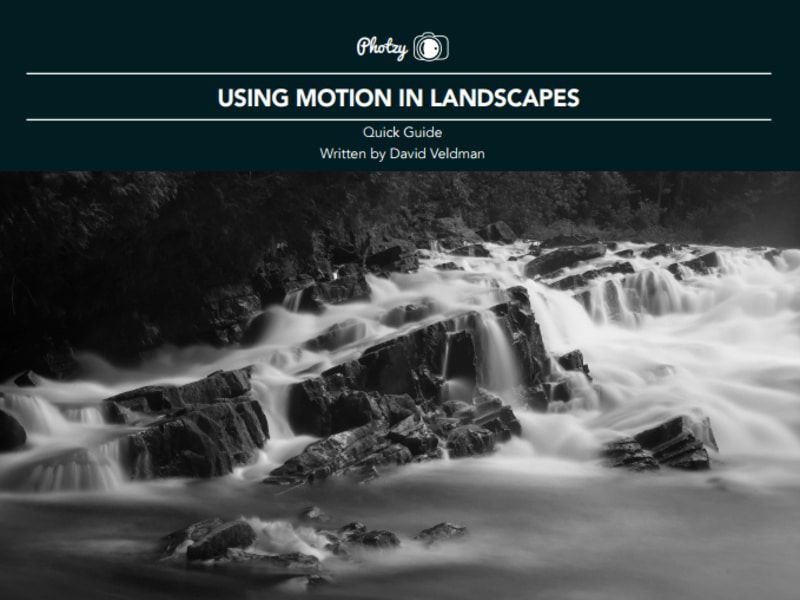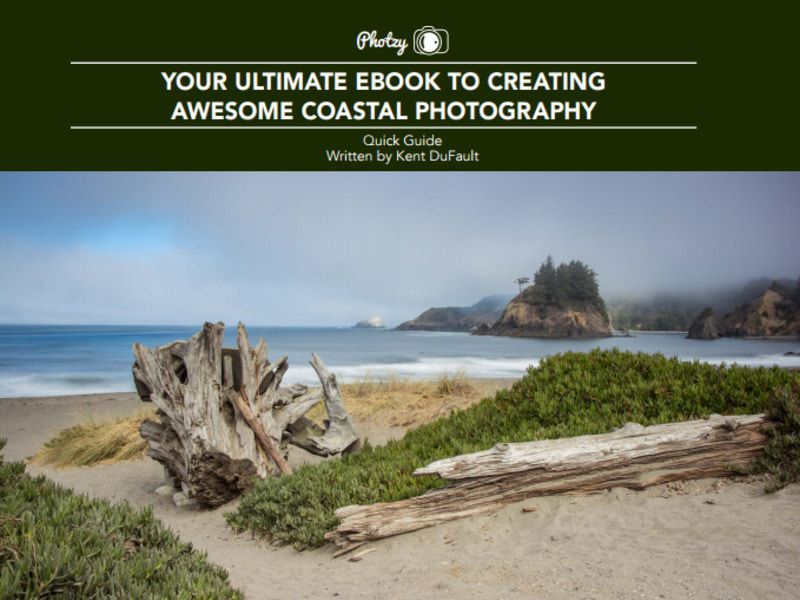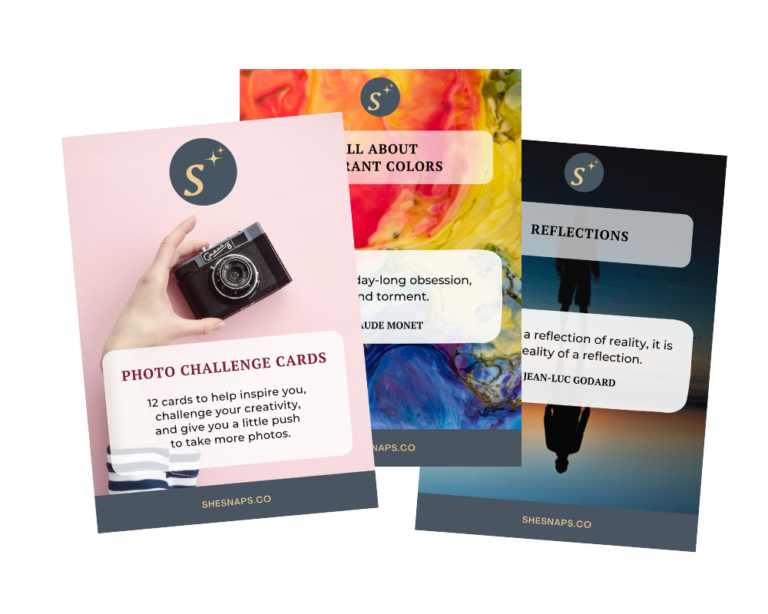Landscape photography is more than just capturing nature; it’s about encapsulating the very essence of a place and moment. Dive deep with these four eBooks, each honing in on a distinct facet of landscape photography: dynamic perspective, minimalism, motion, and the mesmerizing charm of coastal vistas. Paired with hands-on exercises and our key learnings from each guide, we hope they help you to improve your approach to landscapes, transforming every shot into a masterpiece!
1. Using Perspective to Create Dynamic Landscape Shots
Key Points Covered
Understanding Perspective
Perspective is a critical component of composition in photography. It’s the representation of an image on a flat surface as seen by the eye. Landscape photographers, unlike portrait photographers, can’t control the movement of their subject. Instead, they alter their position in relation to the subject to change the shot’s perspective. This movement can introduce distortions, but these can be used advantageously to create dynamic images.
Types of Perspective
There are different classifications of perspective, with zero and single point being the most common in landscape photography. Single point perspective relies heavily on leading lines, drawing the viewer into the image. Zero point perspective, often found in natural landscapes, doesn’t contain a true vanishing point due to the absence of parallel lines in nature. However, it can still convey depth using size cues and shadows.
Altering Perspective with Camera Position and Lenses
There are two ways that you can start to experiment with perspective: the “Worm’s View” and the “Bird’s Eye View.” The former involves shooting from a low angle, emphasising the subject’s power and often including a strong foreground. The latter is a higher vantage point, often diminishing the subject’s power. Also remember, your choice of using a wide-angle or telephoto lens can significantly impact the perspective and depth in an image.
Exercise 1 – Exploring Perspectives
- Choose a landscape scene.
- First, capture it from an eye-level perspective.
- Now, get low and capture a “Worm’s View” of the same scene.
- Finally, find a higher vantage point, such as a hill or a platform, and capture a “Bird’s Eye View.”
- Compare the three images, noting how the perspective changes the mood, depth, and overall feel of the scene.
2. Using Minimalism in Landscape Photography
Key Points Covered
Understanding Minimalism
Minimalism in visual arts refers to reducing the subject to its essence and removing anything non-essential. In photography, it can be thought of as ‘using as few elements as possible.’ It’s essential not to confuse minimalism with abstraction. So, while minimalism seeks to decrease the number of elements in an image, abstraction is a non-literal way of seeing. Remember that the two can be closely related, but they serve different purposes.
Why Use Minimalism
Simplicity is the core reason behind using minimalism. Simple images tend to be stronger and can capture the viewer’s attention more effectively. A visually busy image can overwhelm the viewer, making it harder for them to focus on the main subject or message. By practicing minimalism, photographers can create balanced and uncluttered compositions that resonate more with viewers.
Techniques for Minimalist Landscapes
The guide highlights several techniques to achieve minimalist landscapes:
- Color: A color can be an element in itself. Using contrasting or complementary colors can enhance the impact of a minimalist image
- The Sky: The sky, especially when cloudless, can be a significant ally in creating minimalist landscapes. It can be combined with a foreground element to produce a simple yet striking image
- Silhouette: Silhouettes can be visually striking due to the contrast they create. They can be used effectively against the backdrop of the sky to produce memorable minimalist images
Exercise 2 – A Minimalist Landscape Challenge
- Choose a landscape scene and capture it using a minimalist approach. Start by identifying the essential elements you want to focus on and eliminate any distractions.
- Experiment with different techniques such as using contrasting colors, incorporating the sky, or creating silhouettes.
- Analyze your shots and identify the minimalist techniques you employed.
3. Using Motion in Landscapes
Key Points Covered
Dynamic vs. Static Images
While many people assume landscape photography is straightforward due to its static nature, the challenge lies in making an image stand out. Introducing motion can elevate a landscape photograph from being static to dynamic. Motion can be captured in two primary ways: using a long shutter speed to blur the motion or a short shutter speed to freeze it.
Subjects for Capturing Motion
Several subjects can effectively convey motion in landscape photography:
- Water: Whether it’s rivers, oceans, or waterfalls, water can be captured with long exposures to create silky effects or with fast shutter speeds to showcase its power
- Clouds: Clouds can be captured using long shutter speeds, especially during daylight, to create a sense of movement in the sky
- Fog and Mist: These elements can be challenging to find but can produce captivating images when captured in motion
- Foliage: Wind can be used to an advantage by using a long exposure to blur the movement of trees or plants, creating a sense of motion
- Camera Movement: Intentional movement of the camera, such as twitching the hand during a shot, can create abstract and dynamic images
The Importance of Shutter Speed
Shutter speed is the primary setting to consider when capturing motion. Depending on the desired effect (freezing or blurring motion), you should adjust their shutter speed accordingly. Shooting in manual mode is recommended for ultimate control when capturing motion.
Exercise 3 – Capturing Motion in a Landscape
- Choose a landscape scene with a moving element, such as water, clouds, or foliage.
- Capture the scene in three ways:
- Use a fast shutter speed to freeze the motion.
- Use a slow shutter speed to blur the motion.
- Introduce intentional camera movement to create an abstract effect.
- Analyze the differences in the three images and how motion is portrayed in each. Think about how the techniques used and the effects achieved impacted the photographs.
4. The Ultimate eBook to Creating Awesome Coastal Photography
Key Points Covered
Creating Perspective in Coastal Photography
Capturing the vastness of coastal landscapes can be challenging. To convey the enormity of the scene, it’s essential to introduce elements that provide a sense of scale and perspective. You can achieve this by including people, signs, or other recognizable objects in the frame. For instance, the presence of people in a shot can help convey the vastness of the ocean or the height of a cliff.
Including Both Water and Shoreline
To create a more immersive experience for the viewer, it’s often better to include both the water and the shoreline in coastal photographs. This approach helps place the viewer in the scene, making them feel as if they are standing right there. The inclusion of additional elements, such as flowers or rocks in the foreground, can further enhance the composition and storytelling aspect of the image.
Working with Different Times of Day
While the Golden Hour is often touted as the best time for photography, coastal photographers might not always have the luxury of shooting during these times. So, it’s important to adapt to the available lighting conditions. Techniques such as focusing on shapes and textures, considering post-production effects, and finding the best angle relative to the sun can help achieve compelling shots even in less-than-ideal lighting conditions.
Exercise 4: Coastal Perspective
- Head to a coastal location and choose a scene that captures the vastness of the landscape.
- First, capture a shot without any elements for scale.
- Next, introduce a recognizable object or person into the frame to provide a sense of scale and perspective.
- Finally, experiment with different times of the day, noting how the changing light affects the mood and feel of the image.
- Compare the images and reflect on how the inclusion of scale elements and varying light conditions impacted the overall composition and storytelling of each shot.
Looking for additional resources on Landscape Photography?
Check out the Complete Landscape Photography Guide by our friends at Photzy. In just 237 pages, uncover equipment insights, style development, post-processing techniques, and unique composition strategies. Get this Premium Guide here.
